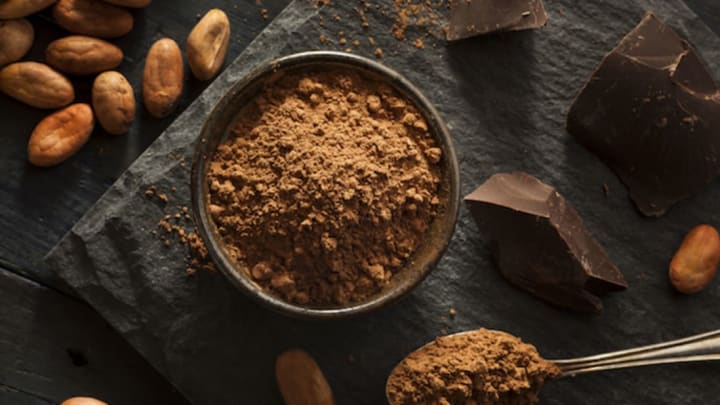It’s no secret that people love chocolate, but throughout history it has been used as much more than a dessert option.
The Aztecs, for example used cacao beans as currency, in addition to drinking cocoa in religious ceremonies. To buy food, slaves, or even prostitutes, they simply counted up their cacao beans and exchanged them for the item (or person) they were buying.
In general, this barter system worked well. For example, an Aztec could trade one cacao bean for five long green chiles or 20 small tomatoes. Three cacao beans could purchase an unripe avocado, 20 beans could acquire a laborer to carry stuff from one place to another, and 30 beans could procure a small rabbit. Because cacao beans were not uniform in size or quality, big, robust beans were worth more than small, shrunken, or shriveled beans. To pay for less frequent, big-ticket purchases like a canoe or a warrior’s shield, Aztecs used quachtli (pieces of long white cloth) instead of cacao beans. The exchange rate between quachtli and beans varied between 65 beans for a simple quachtli to 300 beans for a more elaborate quachtli.
Cacao beans became so valuable that counterfeiters made fake cacao beans using a variety of materials, such as ash, clay, amaranth dough, wax, or avocado pits. Some forgers painted or dyed their material of choice to make it more closely resemble the bean, while others emptied the real bean of its cacao content and filled it with mud or sand. To avoid detection, particularly sneaky counterfeiters even used a mix of real cacao beans with fake ones.
Creating counterfeit chocolate, however, is not a relic from the distant past—it’s still done today. Because more and more consumers want high quality, fair trade, artisanal chocolate, the counterfeiting industry is alive and well. Today’s chocolate counterfeiters use a variety of techniques, such as substituting lower quality cacao beans than advertised or mixing cheap ingredients like vegetable oil into chocolate bars. Some counterfeiters also make cheap, inferior chocolate products and slap on imitation labels and the packaging of well-known chocolate companies, such as Nestle or Ferrero Rocher. In one particularly disturbing example of what could happen in a low-grade, counterfeit chocolate product, this news report shows a Chinese imitation product with little white larvae worms crawling out of the boxed delicacies. And though deemed "harmless but low quality copies," the press event below shows some of the 10 tons of chocolates seized by French authorities, worth more than $300,000.
In late 2013, a group of scientists from the U.S., China, and Trinidad and Tobago published an article in the Journal of Agricultural and Food Chemistry about their method to accurately determine the genetic identity of a single cacao bean. Since early 2014, the USDA’s agricultural research team has been using this method to genetically test chocolate and determine the origin of the cacao used. They study single nucleotide proteins (or SNPs; pronounced “snips”) to ascertain if the cacao beans used to make a piece of chocolate actually originated where the growers or middlemen claim they did.
Because beans that are grown in Peru, for example, have different genetic footprints than beans grown in other parts of the world, researchers extract the cacao bean’s DNA to identify the location of the cacao trees from which the bean originated. Just as Aztec cacao bean counterfeiters did, some growers and middlemen purposely (or sometimes accidentally) mix average quality beans in with a batch of premium beans.
Although testing the DNA of cacao beans to confirm authenticity or discover fraud is an exciting development for the chocolate industry, it’s not a perfect method. Testing is expensive for chocolate companies, which then pass on an increased cost to consumers. Additionally, the location where the bean grew is not the only determining factor of its quality—other factors, such as how the bean was produced, how long it was roasted, and how it was stored or transported, also influence the quality of the chocolate. And, to top it off, some argue that consumers don't even know quality chocolate when they taste it. However, if these new tests work as planned, consumers will be able to make better-informed decisions about their chocolate purchases—and hopefully one day chocolate counterfeiting will go the way of trading cacao beans for canoes.
